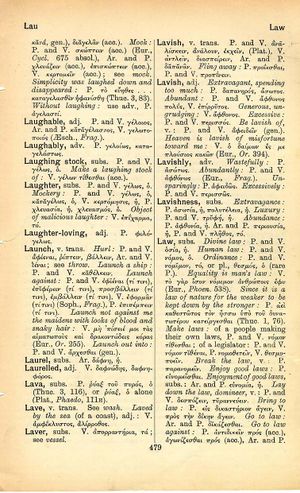laver
From LSJ
οἱ Κυρηναϊκοὶ δόξαις ἐχρῶντο τοιαύταις: δύο πάθη ὑφίσταντο, πόνον καὶ ἡδονήν, τὴν μὲν λείαν κίνησιν, τὴν ἡδονήν, τὸν δὲ πόνον τραχεῖαν κίνησιν → the Cyrenaics admitted two sensations, pain and pleasure, the one consisting in a smooth motion, pleasure, the other a rough motion, pain
English > Greek (Woodhouse)
substantive
V. ἀπορραντήρια, τά; see vessel.
Latin > English (Lewis & Short)
lăver: ĕris, f.,
I a water-plant, Plin. 26, 8, 32, § 50; called also sion, id. 22, 22, 41, § 84.
Latin > French (Gaffiot 2016)
lăvĕr, ĕris, n., sium ou berle [plante] : Plin. 26, 50 ; 22, 84.
Latin > German (Georges)
laver, eris, f. (lavo), eine Sumpfpflanze, sonst sium gen., Plin. 26, 50.

